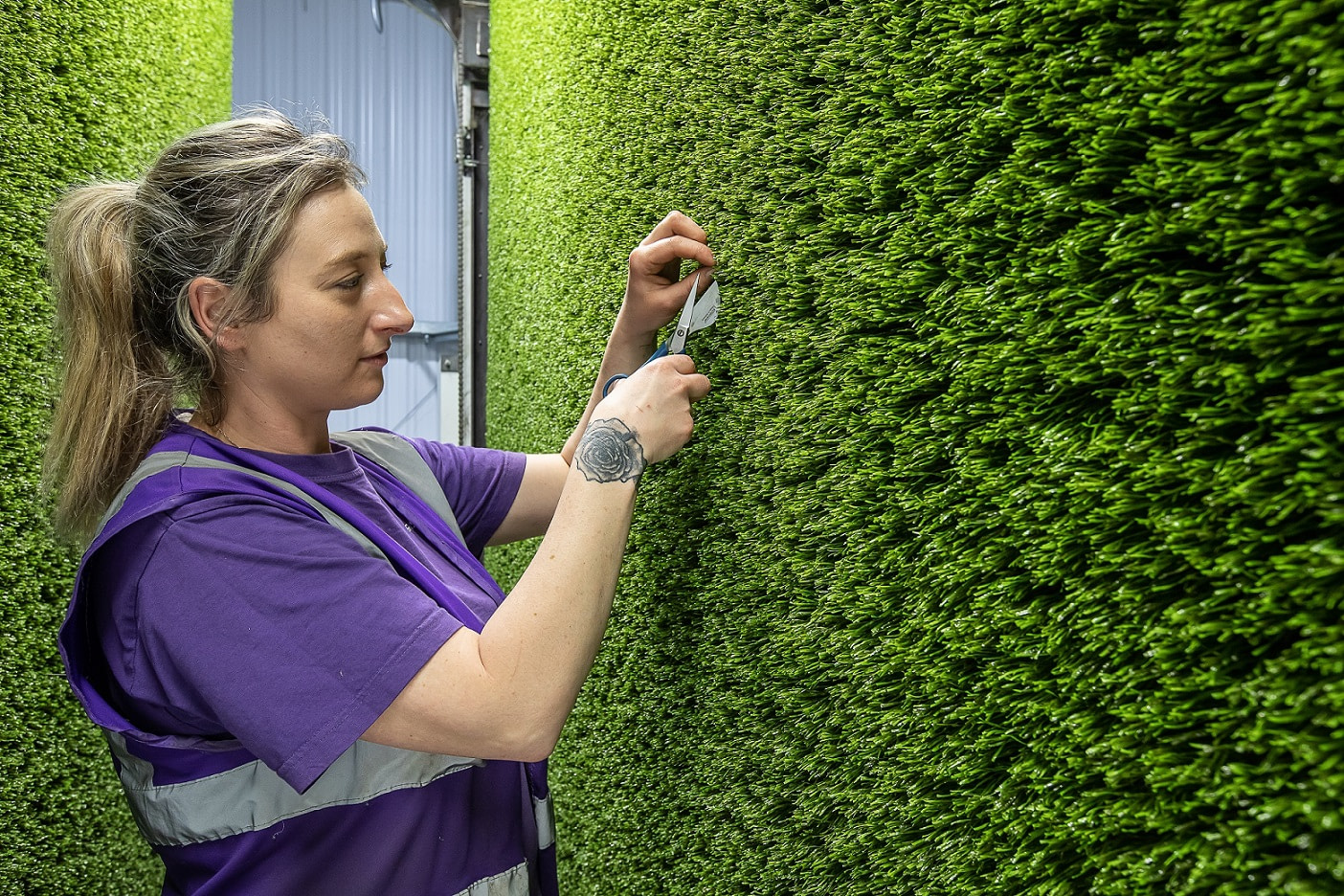In an era where environmental consciousness meets practicality, synthetic lawns have emerged as a transformative landscaping solution. This article explores the myriad benefits of synthetic lawns, from water conservation to low maintenance, and delves into their environmental impact and cost-effectiveness.
Water conservation:
The green gift to arid regions synthetic lawns stand as a beacon of water conservation in regions plagued by drought. By eliminating the need for constant watering, these artificial turfs help communities conserve precious water resources, fostering a sustainable approach to landscaping.

Image Source – Google
High aesthetics:
Redefining Landscape Upkeep Bid farewell to the days of endless mowing, weeding, and fertilizing. Synthetic lawns demand minimal maintenance, freeing up time and resources for homeowners and businesses.
The consistent, lush appearance of these artificial turfs throughout the year enhances curb appeal, ensuring a picturesque landscape without the hassle of constant upkeep.
Environmental impact:
A Greener Footprint Synthetic lawns contribute to a healthier environment by reducing the need for harmful pesticides, herbicides, and fertilizers. Chemical runoff, a common consequence of traditional lawn care, poses threats to local ecosystems.
With synthetic lawns, this environmental hazard is mitigated, promoting a more balanced and sustainable ecosystem. Moreover, the absence of gas-powered lawn equipment decreases air pollution, making synthetic lawns an eco-conscious choice.
Cost-effectiveness:
A Long-Term Investment While the upfront cost of installing synthetic lawns may seem higher, the long-term savings quickly become evident. Reduced water bills, minimal maintenance expenses, and the elimination of various lawn care products make synthetic lawns a cost-effective choice over time.
Conclusion
In the pursuit of a greener, more sustainable future, synthetic lawns emerge as a pragmatic and environmentally conscious choice. Their multifaceted advantages, from water conservation to low maintenance, make them a compelling option for modern landscapes.
